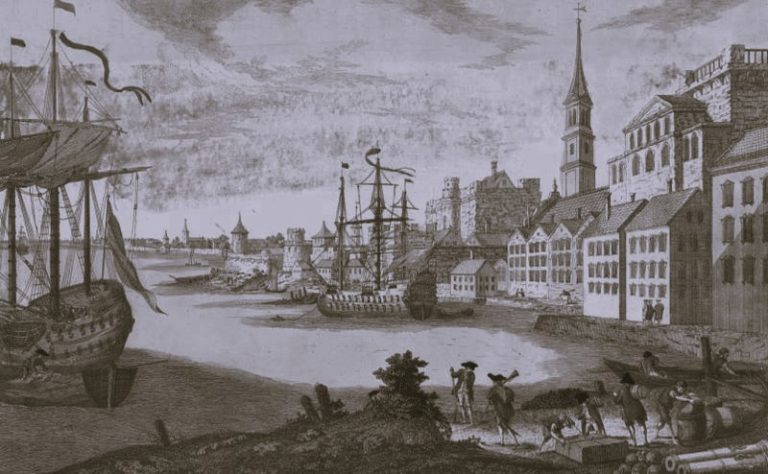

By Dr. Dianne Bystrom
Former Director of the Carrie Chapman Catt Center for Women and Politics
Iowa State University

By Dr. Karen M. Kedrowski
Director of the Carrie Chapman Catt Center
Iowa State University
The 19th Amendment enfranchised millions of women across the United States following a seven-decade campaign. The struggle to expand voting rights to women resonates today as the country continues to debate who should vote and how.
As scholars of civic engagement and women’s suffrage, we have compiled “19 Things to Know” about this landmark amendment. Together they reveal the strength and determination of the suffrage movement as it battled for this fundamental right of citizenship.
1. Many early suffragists were also abolitionists. They include Lucretia Mott, Elizabeth Cady Stanton, Susan B. Anthony, Lucy Stone, Sojourner Truth, Frederick Douglass and Harriet Tubman.
2. The first women’s rights convention took place in Seneca Falls, New York, on July 19-20, 1848. Of the 11 resolutions demanding equality – in the workplace, family and education, for example – only women’s right to vote drew opposition before it was approved. Although abolitionists had called for women’s voting rights before 1848, suffragists later viewed the convention as launching the U.S. women’s suffrage movement.
3. In 1869 the movement split over disagreements about the 15th Amendment, which granted voting rights to African American men but not women.
The National Woman Suffrage Association lobbied for a federal amendment, while the American Woman Suffrage Association pursued a state-by-state strategy. Recognizing that a divided movement was hurting their success, the groups merged in 1890 as the National American Woman Suffrage Association, or NAWSA.
4. Suffrage was a mass movement with diverse voices. They included the National Association of Colored Women, the Woman’s Christian Temperance Union, farmers’ organizations and the Women’s Trade Union League. Most of these organizations became active in suffrage after the creation of NAWSA.
5. Women’s suffrage depended on male supporters, among them state legislators and members of Congress. Only men could vote in state referenda to extend the vote to women. Men did so in Colorado, New York and Oklahoma. Meanwhile, thousands of women opposed suffrage. They thought it would undermine women’s influence in the home and family.
6. Several political and social movements during the Progressive Era, 1890-1920, prioritized suffrage. Women realized they needed voting rights to reform child labor laws, promote public health, and prohibit alcohol and prostitution. These suffragists framed their roles, as wives and mothers, as political virtues to advance a more moral government.
7. Besides the leadership provided by the national women’s suffrage associations, hundreds of local and state organizations engaged thousands of volunteers as well. Some of the earliest state associations were organized in Kansas in 1867, Iowa in 1870 and Washington state in 1871.
8. African American women reformers saw suffrage as an important goal. They began forming their own clubs in the 1880s and founded the National Association of Colored Women in 1896. Unlike predominantly white suffrage organizations, the NACW called for other reforms to address the economic, educational and social welfare of African American women and children, such as job training programs, fair wages and child care.
9. Millions of women enjoyed the right to vote before the 19th Amendment was ratified. Women had full voting rights in 15 states and the Alaska territory, and limited suffrage, including voting in presidential elections, in another 12 states before 1920. Their influence helped build momentum for the 19th Amendment.
10. In 1913 Alice Paul organized NAWSA’s first women’s suffrage parade in Washington, D.C. The police failed to provide the suffragists with adequate protection, and spectators attacked the marchers. Paul formed a rival suffrage organization, the National Woman’s Party, in 1916.

11. In a speech titled “The Crisis” at NAWSA’s 1916 convention, president Carrie Chapman Catt outlined her “Winning Plan” to focus efforts on a federal amendment while encouraging women to work in their states for the level of suffrage that could be achieved.
12. In 1916 Jeannette Rankin, a Republican from Montana, became the first woman elected to the U.S. Congress. Lawmakers greeted her with a standing ovation when she was introduced in the House of Representatives. A committed suffragist, Rankin voted for the 19th Amendment in 1918.
13. In 1917 the National Woman’s Party organized protests outside the White House to pressure President Woodrow Wilson to support women’s suffrage. For several months, suffragists protested in silence six days a week. Wilson initially tolerated the demonstrations but later became embarrassed by them.
14. Thirty-three suffragists picketing outside the White House on Nov. 10, 1917, were arrested and jailed. They were fed maggot-infested food, beaten and tortured. The suffragists protested with a hunger strike and were brutally force-fed. They were released after the Washington, D.C. Court of Appeals declared their arrests unconstitutional.
15. The Republican Party was viewed as more supportive of women’s suffrage than Democrats until 1916, when both parties publicly supported state suffrage.
Congress approved the 19th Amendment in 1919 with bipartisan support: 83% percent of Republicans in the House and 82% in the Senate, and 53% of Democrats in the House and 54% in the Senate. Some Democrats from the South opposed voting rights for African American women.

16. Carrie Chapman Catt founded the League of Women Voters on Feb. 14, 1920, at the NAWSA convention. Tennessee became the final state needed to ratify the 19th Amendment six months later.
17. Some 500,000 African American women could vote in states where their male counterparts were enfranchised, according to the 1920 U.S. Census. But in the South, African American men and women remained disenfranchised through state-imposed literacy tests, poll taxes and violence.
African American women continued the fight for voting rights. In 1920 Mary McLeod Bethune of Florida led voter registration drives while risking racist attacks. Fannie Lou Hamer of Mississippi organized African American voter registration efforts in the South in the early 1960s. The Voting Rights Act of 1965 outlawed discriminatory voting barriers adopted in many Southern states after the Civil War.
18. Some 10 million women voted in 1920, a turnout rate of 36%, compared to 68% for men. Women voter turnout rates have gradually increased and exceeded male turnout rates since 1980, when 61.9% of women voted compared to 61.5% of men. In 2016, 63.3% of women voted compared to 59.3% of men.
19. In January Virginia became the 38th state to ratify the Equal Rights Amendment, following Nevada, in 2017; and Illinois, in 2018. The ERA was first introduced to Congress in 1923, approved in 1972 and ratified by 35 out of constitutionally required 38 states by 1974.
The recent resurgence of women’s activism has refocused attention on gender equality issues, including the ERA, which supporters argue is needed to protect women’s rights. Although the U.S. House voted in February to remove the original deadline set by Congress and pave the way for its final approval, no action is expected in the Senate this year.
Originally published by The Conversation, 06.08.2020, under the terms of a Creative Commons Attribution/No derivatives license.







